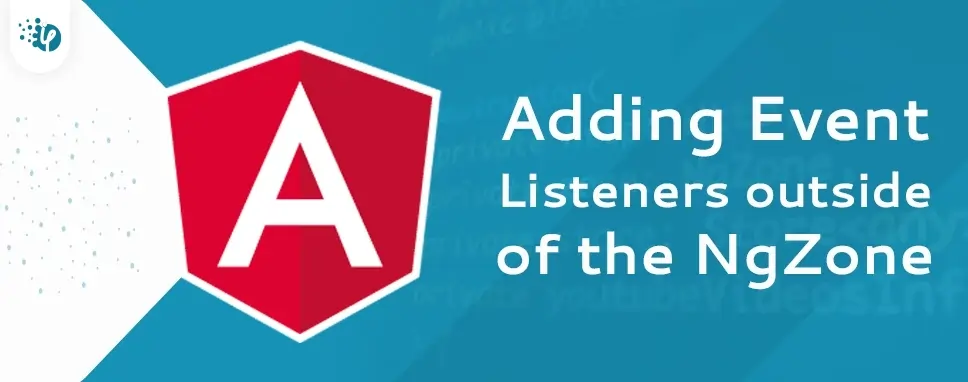How to Do Forecasting in Power BI (Steps & Accuracy Metrics)
Remember our last guide - Power BI forecasting? It revealed things that truly blocks accuracy, both structural and situational. Now it's time to take the next step. Knowing Power...
Listening is fun too.
Straighten your back and cherish with coffee - PLAY !

If we're familiar with the Angular framework, we'll know that by default, any asynchronous event triggers the change detection process. In certain situations, we don't even have to worry about it; it just works as expected. However, in some cases, running the change detection process too frequently can lead to poor runtime efficiency.
Assume that we want to call the console.log method when we click the button:
import { AfterViewChecked, Component } from "@angular/core";
@Component({
selector: "my-app",
templateUrl: "./app.component.html",
styleUrls: ["./app.component.css"]
})
export class AppComponent implements AfterViewChecked {
onClick() {
console.log("onClick");
}
ngAfterViewChecked() {
console.log("CD performed");
}
}
When we click the button, both the bound event listener and the change detection process are triggered. In a real-world scenario, instead of calling console.log, we could perform an action that does not require bindings to be updated.
Although the method in question allows us to opt-out of the change detection process, it must provide code to register an event listener. As a result, the following solution, which simply runs the callback outside of the NgZone, will not prevent the change detection process from being performed:\
import { AfterViewChecked, Component, NgZone } from "@angular/core";
@Component({
selector: "my-app",
templateUrl: "./app.component.html",
styleUrls: ["./app.component.css"]
})
export class AppComponent implements AfterViewChecked {
constructor(private readonly zone: NgZone) {}
onClick() {
this.zone.runOutsideAngular(() => {
console.log("onClick");
});
}
ngAfterViewChecked() {
console.log("CD performed");
}
}
We may use the ViewChild decorator to get a reference to the DOM node and add an event listener in one of the following ways:
import { AfterViewChecked, AfterViewInit, Component, ElementRef, NgZone, Renderer2, ViewChild } from "@angular/core"; import { fromEvent } from "rxjs"; @Component({ selector: "my-app", templateUrl: "./app.component.html", styleUrls: ["./app.component.css"] }) export class AppComponent implements AfterViewInit, AfterViewChecked { @ViewChild("btn") btnEl: ElementRef; constructor( private readonly zone: NgZone, private readonly renderer: Renderer2 ) {} onClick() { console.log("onClick"); } ngAfterViewInit() { this.setupClickListener(); } ngAfterViewChecked() { console.log("CD performed"); } private setupClickListener() { this.zone.runOutsideAngular(() => { this.setupClickListenerViaNativeAPI(); // this.setupClickListenerViaRenderer(); // this.setupClickListenerViaRxJS(); }); } private setupClickListenerViaNativeAPI() { this.btnEl.nativeElement.addEventListener("click", () => { console.log("onClick"); }); } private setupClickListenerViaRenderer() { this.renderer.listen(this.btnEl.nativeElement, "click", () => { console.log("onClick"); }); }
While the previous paragraph's solution works well, it is a little verbose. we can encapsulate the logic in an attribute directive, which allows dependency injection to provide easy access to the underlying DOM element (ElementRef token). Then, outside of the NgZone, we can add an event listener and emit an event when it's appropriate:
import { Directive, ElementRef, EventEmitter, NgZone, OnDestroy, OnInit, Output, Renderer2 } from "@angular/core"; @Directive({ selector: "[click.zoneless]" }) export class ClickZonelessDirective implements OnInit, OnDestroy { @Output("click.zoneless") clickZoneless = new EventEmitter(); private teardownLogicFn: Function; constructor( private readonly zone: NgZone, private readonly el: ElementRef, private readonly renderer: Renderer2 ) {} ngOnInit() { this.zone.runOutsideAngular(() => { this.setupClickListener(); }); } ngOnDestroy() { this.teardownLogicFn(); } private setupClickListener() { this.teardownLogicFn = this.renderer.listen( this.el.nativeElement, "click", (event: MouseEvent) => { this.clickZoneless.emit(event); } ); } }
The directive-based approach has the disadvantage of not being able to be configured for an event type. Thankfully, Angular allows us to build our Event Manager Plugin. In other words, we take control of adding a listener for an event whose name corresponds to the predicate function (the supports method). If a match is found, the addEventListener method is called, allowing us to handle the job. The two methods are part of the user-defined service that is registered as an EVENT MANAGER PLUGINS token provider:
import { Injectable } from "@angular/core";
import { EventManager } from "@angular/platform-browser";
@Injectable()
export class ZonelessEventPluginService {
manager: EventManager;
supports(eventName: string): boolean {
return eventName.endsWith(".zoneless");
}
addEventListener(
element: HTMLElement,
eventName: string,
originalHandler: EventListener
): Function {
const [nativeEventName] = eventName.split(".");
this.manager.getZone().runOutsideAngular(() => {
element.addEventListener(nativeEventName, originalHandler);
});
return () => element.removeEventListener(nativeEventName, originalHandler);
}
}
import { NgModule } from "@angular/core";
import {
BrowserModule,
EVENT_MANAGER_PLUGINS
} from "@angular/platform-browser";
import { AppComponent } from "./app.component";
import { ClickZonelessDirective } from "./click-zoneless.directive";
import { ZonelessEventPluginService } from "./zoneless-event-plugin.service";
@NgModule({
imports: [BrowserModule],
declarations: [
AppComponent,
// ClickZonelessDirective
],
bootstrap: [AppComponent],
providers: [
{
provide: EVENT_MANAGER_PLUGINS,
useClass: ZonelessEventPluginService,
multi: true
}
]
})
export class AppModule {}
Fortunately, by calling the initialization code from outside the NgZone, we can avoid triggering the change detection process:
import { Directive, ElementRef, NgZone, OnInit } from "@angular/core"; import tippy from "tippy.js"; @Directive({ selector: "[appTooltip]" }) export class TooltipDirective implements OnInit { constructor(private readonly zone: NgZone, private readonly el: ElementRef) {} ngOnInit() { this.zone.runOutsideAngular(() => { this.setupTooltip(); }); } private setupTooltip() { tippy(this.el.nativeElement, { content: "Bazinga!" }); } }
If we find ourselves in a situation where we are performing a task that does not need binding updates in response to a DOM event, we can improve the performance of our application by not triggering an unwanted change detection run Outside of the NgZone, we must be careful when registering an event listener. The most elegant and reusable solution is to use a custom Event Planner Plugin. If we're using a third-party solution that modifies the DOM, we should think about running its initialization code outside of the NgZone.

Remember our last guide - Power BI forecasting? It revealed things that truly blocks accuracy, both structural and situational. Now it's time to take the next step. Knowing Power...

It's amazing to see how Data teams today are racing ahead - moving from traditional warehouses to cloud-native platforms, lakehouses, and real-time architectures. But in this rush,...

Think about the last time CTOs spent most of their time fixing old systems. Updates were slow, servers were expensive, and adding new features took time. Now, things have changed....